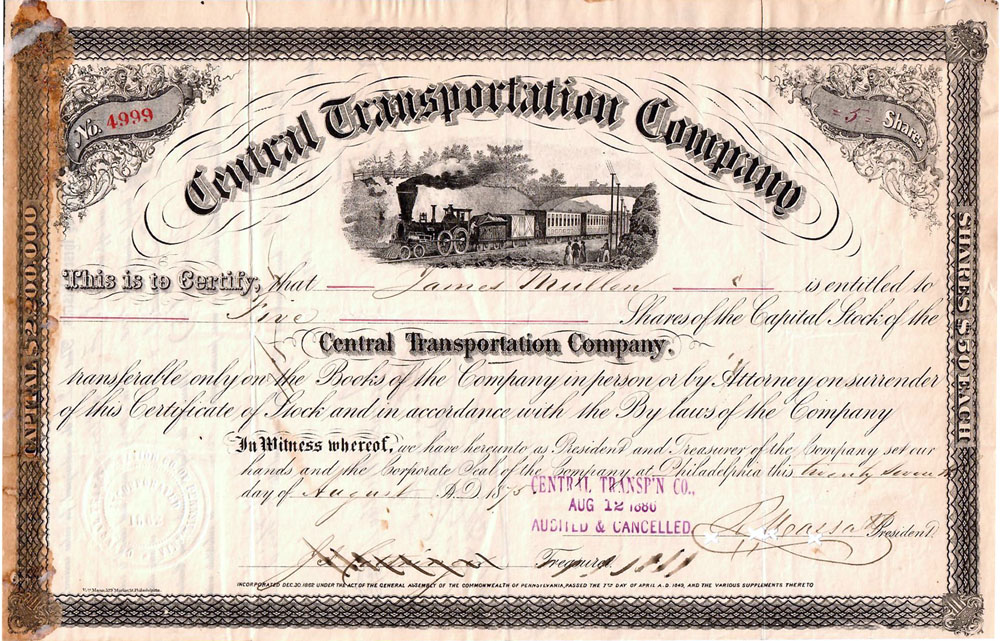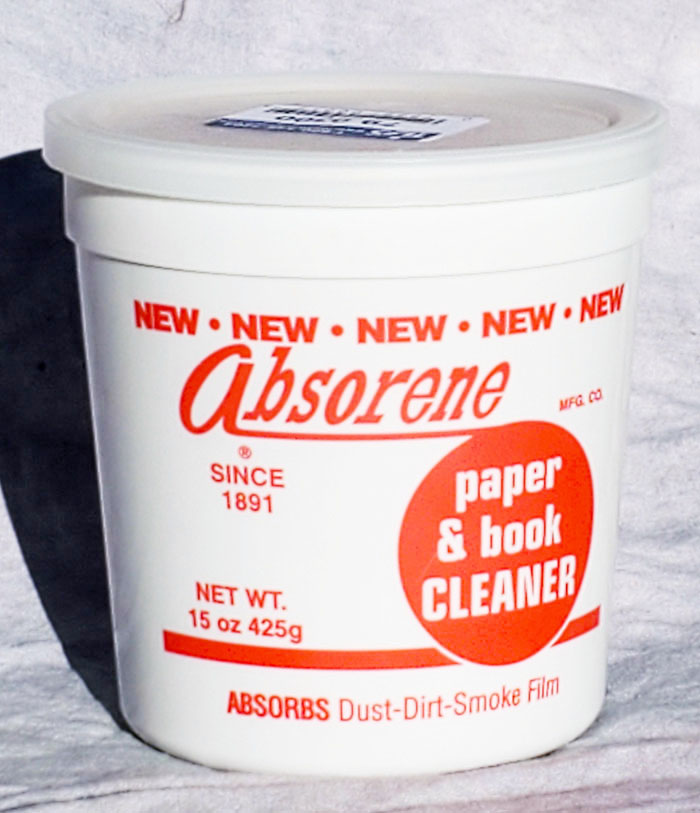Restoration
(This page is an expansion of issues I raised in an article I wrote for the June, 2008 issue of Scripophily, the official publication of the International Bond and Share Society.)

All paper collectors own certificates, paper money, or paper documents that have problems. We cannot get away from problems when we collect paper. It is entirely normal to deal with paper tears, discoloration, brittleness, acid deterioration, disintegration, foxing, mold spots, rodent damage, curling, fading, soiling, grease spots, cellophane tape, punch and knife cancellations, staple holes, pin holes, stub stains, ink smear, handling marks and missing pieces.
Sooner or later, practically every collector wonders about repair and restoration. They question: "Should I have my documents professionally repaired?" Unfortunately, that question is too broad for a single answer. The question is all about how collectors view their versions of the hobby and my opinion would never matter anyway. Instead of giving some half-baked, non-relevant answer, I pose questions that collectors need to answer for themselves.
Have YOU ever bought, or are YOU willing to buy, repaired or restored documents for YOUR own collection?
If a collector answers "No", then there is no need don't waste any more time. If a collector is unwilling to buy such documents, then why in the world would a collector expect someone else to do so?
On the other hand, if they don't have a problem buying repaired certificates and documents, then we can get down to dollars and cents.
How much would you like your document to be "worth" if repaired or restored?
For the sake of illustration, let's assume a collector bought a distressed certificate for $100. In great condition, the certificate might sell for $600. If a collector thinks the item would fetch $350 in restored condition and the repair cost $200, then the repair is probably worth the effort.
However, if the initial purchase price were higher and/or the repair were more expensive, the economic rationale becomes more questionable. The hard truth is that repaired documents rarely sell for as much as intact documents.
Let's say that a collector's motivation is not monetary, but aesthetic.
Do you want to repair your document to keep it from deteriorating further?
If acid deterioration is an issue, then having someone treat your document with an alkaline buffering agent might be a very good idea. It is non-destructive and should be affordable.
If your document is not particularly brittle, but is coming apart at the folds, then your simplest treatment might be to simply stop handling your item. Invest in a decent Mylar/Melinex holder, put in an acid-free albums and admire your certificate without touching it.
Do you know your exact reason for wanting to restore your document?
If not, it is probably better to wait until your motivations become clear.
Of course, every paper collector wants pristine documents. It is just not always possible. If better appearance is the goal, then why not simply replace the current certificate with a better one?
That is probably not possible within a short time period, so then let's calculate the magnitude of the need for improved appearance.
Do you show off your document so frequently that people are going to be more impressed if your document is cleaner?
This would definitely be the case if collectors display their documents in shows and competitions. In that case, decide how much cleaner the document needs to be. The goal may not be to make it look like it was printed yesterday,

If soiling is the problem, then something simple like a book and paper cleaner might be all that's needed. (Example at right). With hardly any abrasion, you might be able to remove surface soiling with a minimum of effort and risk. Some professionals use dry cleaning fluids to remove soil and finger grease, but they need to be very careful. Some inks can disappear during the process.
Whatever method a collector or restorationist decides to use, make absolutely certain that to do no harm. Far too many paper documents have been destroyed iby attempts at "restoration."
Do you want to remove old yellow cellophane tape?
As long as a repair person can remove cellophane tape easily AND can remove underlying adhesive stains and tears, go for it! Few things improve the appearances of documents more than removing old transparent tape.
However, be very, very careful. Once the tape is removed, the underlying tear probably still needs repair. Some people repair the backs of documents with archival quality, removable rice paper tape. Some restoration specialists go so far as to repair tears by re-laying paper fibers. Be warned; that process is not cheap!
What if you want to remove the greasy film left by plasticizers used in old vinyl holders and pages?
I am very much in favor of improvements like this, providing a pro does the work. Chemical removal of plasticizers is fairly simple and the process is almost always price effective. However, make absolutely certain that the repair specialist has done this kind of work before. Make sure they show before and after photos of their previous work.
What if you want to improve your document so it will look better in a frame?
Before getting carried away, I want collectors to understand what will happen once a certificate is hung on a wall.
IF the document will encounter ANY sunlight, direct or not, the paper WILL turn yellowish or brownish and colors WILL fade. Yes, I know there are such things as UV-resistant films and glass. Yes, I know how framers argue that THEIR framing methods are fully archival. Yes, I know that many people actually believe those claims. And no, the deterioration will not be immediate.
Be aware that many times, the part of the document under the mat will darken first. Discoloration may not be apparent until taken out of the frame some time in the future. for years.
Speaking strictly for myself, I do NOT recommend framing ANY valuable documents behind glass. Instead, I recommend sacrificing cheaper substitutes. Why risk displaying a $500 item when a $50 item will impress all but the most discerning of viewers? In fact, printing technology is getting so good that copies are good enough to frame. If a scanned copy fades, so what? Simply print another while the genuine document sleeps quietly out of harm's way.
Who do I recommend?
Collectors may have noticed that I do not list repair and restoration services on my website. That is not an oversight. I simply have no method of determining which services across the nation will fix paper documents in responsible fashions, in timely manners, and at reasonable costs.
How to learn more
I recommend spending time reviewing the wealth of preservation information available on the web. The first place I suggest visiting is the website of the Library of Congress, particularly its Conservation Division.
Conservation materials and supplies
Please see the Preservation page on this site.